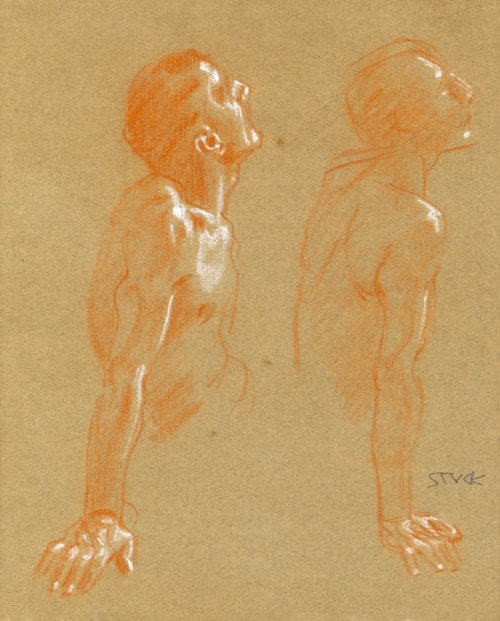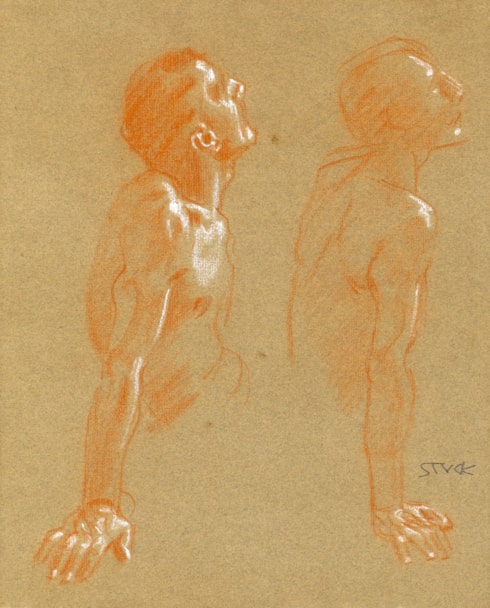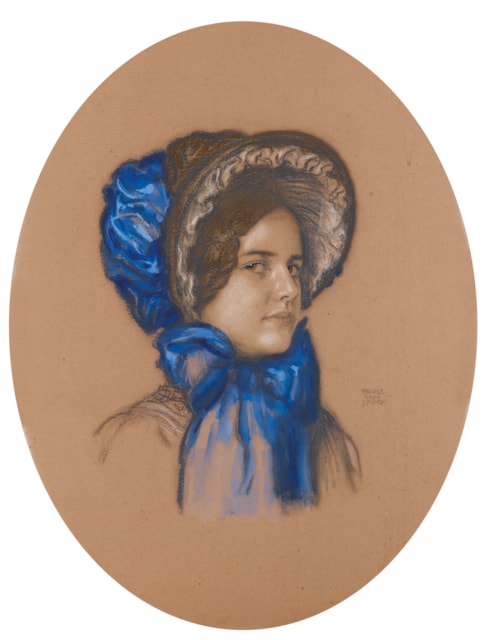
Franz VON STUCK
Tettenweis 1863 - Munich 1928
Biography
Born in lower Bavaria, Franz Stuck came from a peasant stock, and his talent as an artist was evident from an early age. He received his artistic training at the Academy of Applied Arts and the Academy of Fine Arts in Munich. While still a student he began supporting himself with work as an illustrator, producing drawings and caricatures for the picture magazine Fliegende Blätter, as well as designs for bookplates, menus, and so forth. Active as a painter, sculptor, printmaker and architect, Stuck was one of the founders of the Munich Secession in 1892, and soon became among the most successful and renowned artists in the city. His large and boldly coloured mythological paintings, characterized by Symbolist overtones, won medals and prizes at exhibitions in Germany, Europe and America over the next three decades, and he was also much in demand as a portrait painter.
In 1895 Stuck was appointed a Professor at the Akademie in Munich, where his pupils were to include Paul Klee, Josef Albers, and Wassily Kandinsky. In 1897 he began work on the construction and elaborate decoration of a new home and studio in Munich, known as the Villa Stuck, for which he also designed the furniture. The house was completed in 1898, and is today a museum devoted to the artist’s life and work. In 1905 he was awarded a Knight’s Cross of the Order of the Bavarian Throne, which raised him to the nobility, and from this point onwards he signed his works as ‘Franz von Stuck’. At the International Exhibition in Venice in 1909 Stuck was given a room to himself, and in the later years of his career began to focus on sculpture over paintings. By this time, however, his work was beginning to fall out of favour with art critics outside Munich. Although his reputation in Munich itself remained undimmed throughout most of his career, his work and his reputation had fallen into a gradual neglect elsewhere in Germany and the rest of Europe by the second decade of the 20th century.



